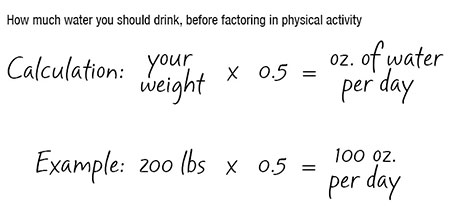How to Calculate Average Inventory
Inventory management is a critical pillar of business success, yet many companies struggle to optimize it. According to a 2023 report by McKinsey, 43% of small businesses face cash flow issues due to poor inventory practices, while enterprises lose up to 10% of annual revenue from overstocking or stockouts. At the core of solving these challenges is mastering how to calculate average inventory—a metric that bridges financial planning and operational efficiency.
This comprehensive guide will transform you into an inventory management expert. You’ll learn:
- The science behind the average inventory formula, with industry-specific examples.
- Advanced techniques like weighted averages for seasonal businesses.
- How to avoid costly mistakes that 68% of businesses make (according to Deloitte).
- Tools to automate calculations and integrate data across supply chains.
Let’s dive deep into the strategies that Fortune 500 companies use to stay ahead.
What Is Average Inventory? (And Why It’s Non-Negotiable for Your Business)
Average inventory represents the mean value of goods available for sale during a specific period. It’s calculated by averaging the beginning inventory (stock at the start of a period) and ending inventory (stock at the end).
Why This Metric Matters
- Financial Accuracy:
- Directly impacts balance sheets and tax filings.
- Example: A $500,000 average inventory error could lead to a 20% misstatement in COGS.
- Operational Efficiency:
- Helps forecast demand and align procurement cycles.
- A 2022 Gartner study found businesses using accurate averages reduced stockouts by 34%.
- Strategic Decision-Making:
- Ties into metrics like inventory turnover ratio and gross margin return on investment (GMROI).
Real-World Application:
A mid-sized electronics retailer with a beginning inventory of 2millionandan∗∗endinginventory∗∗of1.5 million calculates its average inventory level as:

This figure helps them negotiate bulk purchase discounts with suppliers.
The Average Inventory Formula: A Step-by-Step Masterclass
The foundational formula is simple but powerful:

Step 1: Define Your Time Period
- Short-Term Analysis (Monthly/Quarterly): Ideal for fast-moving industries like fashion.
- Long-Term Analysis (Annual): Better for stable industries like manufacturing.
Pro Tip: Align your period with financial reporting cycles for consistency.
Step 2: Calculate Beginning Inventory
- Physical Count: Conduct stock audits using barcode scanners or RFID.
- Software Integration: Pull data from ERP systems like SAP or NetSuite.
Example: A bakery’s beginning inventory on January 1 includes:
- Flour: 1,000 lbs × 0.50/lb=0.50/lb=500
- Sugar: 500 lbs × 0.30/lb=0.30/lb=150
- Total: $650
Step 3: Calculate Ending Inventory
- Perpetual Inventory Systems: Use real-time tracking for accuracy.
- Periodic Systems: Conduct physical counts at period-end.
Example: The same bakery’s ending inventory on January 31 is $800.
Step 4: Apply the Formula

Key Insight: This $725 average helps the bakery plan February’s flour orders to avoid mid-month shortages.
Advanced Methods to Calculate Average Inventory
For businesses with volatile stock levels, these methods add precision:
1. Weighted Average Inventory
When to Use: Seasonal businesses (e.g., holiday decor, swimwear).
Formula:

Example: A ski resort’s winter inventory:
| Month | Inventory Value | Days Active |
|---|---|---|
| November | $150,000 | 30 |
| December | $300,000 | 31 |
| January | $250,000 | 31 |
| February | $100,000 | 28 |
Weighted Average = (150,000×30)+(300,000×31)+(250,000×31)+(100,000×28)/120 = $212,083
Why It Works: Accounts for peak December sales, unlike the basic formula ($200,000).
2. Moving Average Inventory
When to Use: Industries with frequent price changes (e.g., oil, semiconductors).
Calculation:
- Track a rolling 3-month average.
- Example:
- Q1: $50,000
- Q2: $60,000
- Q3: $55,000
- Moving Average: 55,000$
Pro Tip: Use this to smooth out demand spikes from events like Black Friday.
Common Mistakes (And How to Fix Them)
Avoid these pitfalls that distort average inventory level calculations:
1. Mixing FIFO and LIFO Values
- Problem: Using FIFO (First-In, First-Out) for beginning inventory and LIFO (Last-In, First-Out) for ending inventory.
- Solution: Stick to one accounting method.
2. Ignoring Obsolete Stock
- Problem: Including unsellable items (e.g., expired perishables).
- Fix: Subtract obsolete stock before calculating.
Case Study: A pharmaceutical company reduced average inventory errors by 40% after implementing monthly obsolescence audits.
3. Overlooking Seasonality
- Problem: A holiday decor shop using annual averages underestimates Q4 demand.
- Fix: Use weighted averages for cyclical industries.
How to Leverage Average Inventory in Business Strategy
1. Inventory Turnover Ratio
Turnover Ratio = COGS / Average Inventory
Example:
- COGS: $1,000,000
- Average Inventory: $200,000
- Turnover Ratio: 5 (Inventory sells 5x yearly).
Benchmarking:
- Retail: 8–12 (High turnover).
- Manufacturing: 4–6 (Lower turnover).
2. Average Days to Sell Inventory
Days to Sell = 365 / Turnover Ratio
Example:
- Turnover Ratio: 5
- Days to Sell: 73 days
Actionable Insight: If your industry benchmark is 60 days, aim to reduce stock levels or boost sales.
3. Safety Stock Calculation
Safety Stock = (Max Daily Sales × Max Lead Time) − (Average Daily Sales × Average Lead Time)
Example:
- Max Daily Sales: 200 units
- Max Lead Time: 10 days
- Average Daily Sales: 150 units
- Average Lead Time: 7 days
- Safety Stock: (200 × 10) – (150 × 7) = 2000 – 1050 = 950 units
Tools to Automate Average Inventory Calculations
1. Excel/Google Sheets
- Template Setup:
- Column A: Months
- Column B: Beginning Inventory
- Column C: Ending Inventory
- Column D: Formula
=(B2+C2)/2
2. Cloud-Based Software
- QuickBooks Online:
- Automatically pulls data from POS systems.
- Generates average inventory reports in real time.
- TradeGecko:
- Tracks multi-location inventory.
- Calculates weighted averages across warehouses.
Comparison Table:
| Tool | Cost (Monthly) | Best For | Key Feature |
|---|---|---|---|
| QuickBooks | 25–25–150 | Small businesses | Integration with 650+ apps |
| Zoho Inventory | 39–39–299 | E-commerce | Barcode scanning |
| SAP S/4HANA | Custom | Enterprises | AI-driven demand forecasting |
FAQs: Your Top Questions Answered
Q: Can average inventory be negative?
A: No—it reflects physical stock. Negative values signal data entry errors.
Q: How does average inventory affect tax filings?
A: Higher averages may increase property taxes in some states. Consult a CPA.
Q: What’s the difference between average inventory and cycle stock?
A: Cycle stock is the portion meant for regular sales, while average inventory includes safety stock and buffer inventory.
Conclusion:
You’ve now mastered how to calculate average inventory like a seasoned CFO. From basic formulas to advanced weighted averages, you’re equipped to:
- Slash storage costs by 15–30%.
- Boost turnover ratios by aligning with industry benchmarks.
- Automate calculations using tools like QuickBooks or Excel.







